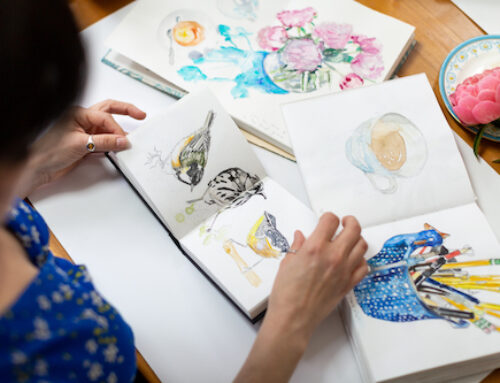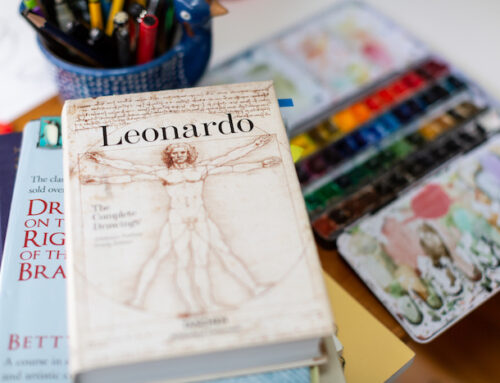Positive and Negative Space Ideas Easy Drawing Items
Negative Space Drawing And 3 Reasons Why It Is Positive
The thing I love about negative space drawing is that you leave all preconceived ideas about how you are going to produce your piece of art work at the door.
Thank goodness that there are tried and tested techniques that help us out. I look forward to using negative space drawing to help me especially when I get stuck.
As you start learning to draw you will come across the idea of "negative space." I love to sometimes use it when I feel "stuck" with my drawings or paintings. Negative spaces and the use of them can make difficult drawings EASY!
How ironic and another one of drawing's paradoxes!
Have you ever thought that you are seeing and drawing something that is not there? (There is something quite magical about this concept as you start to perceive things differently.) When employing negative space drawing you need to forget about the object you are drawing and concentrate on the space around it.
What is negative space?
In order to define what negative space is it helps to firstly clarify the meaning of positive space.
On approach to a drawing we tend to solely focus on the object in question.
Lets remind ourselves of the 5 basic component skill sets to drawing that run alongside one another;
- Perception of edges – drawing the contour lines of an object as you see them. I like to call these the "horizon" of a drawing.
- Spaces – the perception of space in a drawing, the negative (empty spaces) and positive (objects), can complete our drawings.
- Perspective and proportion – how does one thing relate to another? If you watch some of my videos, you will see how I tend to anchor my drawings and rationalise on paper the proportion of one thing to another.
- Shade and light – my favourite. I love to use shadows and tone to accentuate and complete a drawing that might otherwise look a little flat. Light and dark.
- And finally, a sprinkling of magic fairy dust or as Betty Edwards, in her book, "Drawing on the Right Side of the Brain" calls it "gestalt," which occurs nearing completion of a sketch, the "aha" moment when all elements of the drawing comes together.
When we employ the concept of negative space in our sketching we challenge our brains to approach the task in the opposite way in which we are used to – to perceive something that technically is not there! We tend to focus on single objects in our mind's eye and this tends to supersede a "holistic" approach to what we get down on paper.
Negative space drawing is focusing on capturing the spaces and shapes surrounding a drawing. In my picture for example this means the gaps in between the chair, or the rectangular and triangular spaces in and around the chair's legs.
Here are 3 benefits of learning to master sketching negative spaces
Drawing will become easier.
You will be able to manoeuvre around complicated drawing concepts by employing this technique including things like perspective or foreshortening. Employing negative space supports you see the object in a different way and strangely flattens the page and tricks the brain to approach a drawing differently.
Your perception skills improve immensely
Your brain will start to see objects in different ways. You will start to carve out shapes around your object that are just important as the object itself. As an artist we are all drawn to finding the easiest way in which to draw an object. Adding this technique to our arsenal and employing it regularly means how we view objects and convey them onto paper becomes easier.
Being "true" to your drawing
Capturing negative space means that your drawing will look better and you will produce drawings that are composed well. Think of negative space as a skeleton that underpins the rest of your drawing. The double benefit in approaching drawing from this angle is that you also create interest around the object you are drawing itself. The negative spaces in themselves become interesting. Getting your negative space right can also accentuate the 3D element of your drawing.
Let's dive in to how to use it effectively in your drawing practise!
An exercise to try! Sketch a chair
Take a look at my sketch example (post picture) in this post.
Notice a few things about how I have sketched my chair;
- I've ignored the object and sketched the shapes I see around it. The chair is not being drawn, but rather it is the spaces around it. I coloured the spaces I drew in the shade of blue.
- I started the sketch at the bottom left midway up the page. I chose to start the sketch by drawing the triangle and shapes around the actual chair. This was my anchor in my drawing from which the rest of the drawing flowed. (This takes practise…) I used this shape in relation to measuring all other shapes in my drawing.
- I then reinforced the negative spaces by sketching them in a wash of watercolour blue.
I started the sketch, not looking at the object but at the spaces I could depict around it. I invest more time in getting the negative spaces correct. Look how distinctive the shaping of negative space can be? I almost forget that I am drawing the chair (that's the magic bit.) It is possible to completely draw an object without actually drawing it, simply by accentuating and paying attention to the shapes around it. Once the negative is down on paper it is easier to see the positive shapes emerge.
Start to identify that the negative space is just as important as the positive. It is just as real and solid as the object we are drawing, especially on our paper where there are no rules. Embracing this technique supports in the development of your perception of space.
For me, it takes the pressure off focusing in on the subject I am drawing. A complicated object becomes less so with this technique.
Want more tips and techniques? Sign up to my community here for more resources!
Share This Story, Choose Your Platform!
Source: https://emilysnotebook.co.uk/all-posts/negative-space-drawing/





0 Response to "Positive and Negative Space Ideas Easy Drawing Items"
Post a Comment